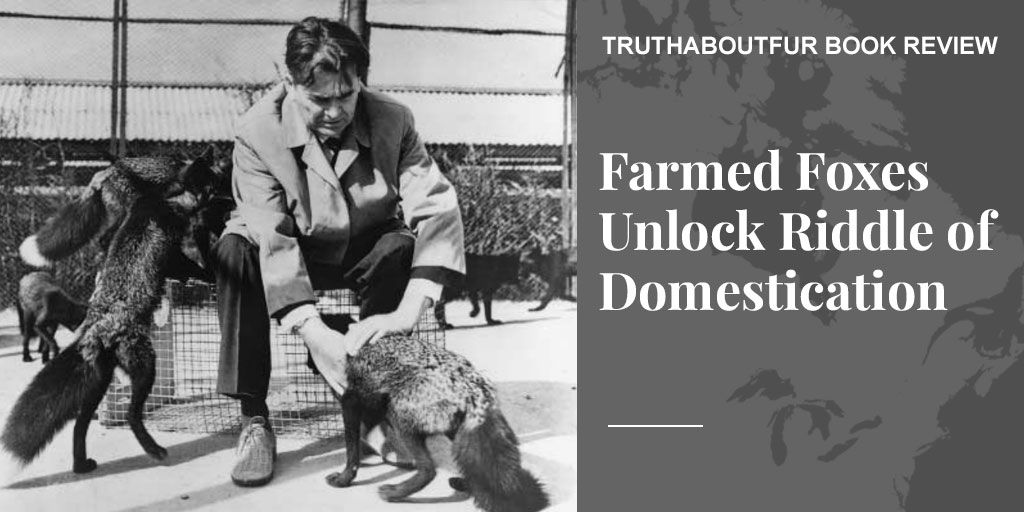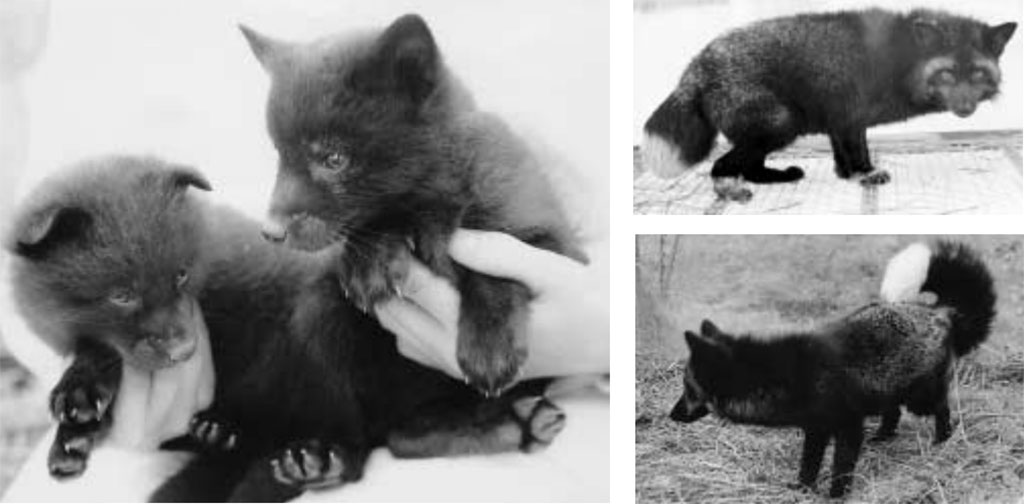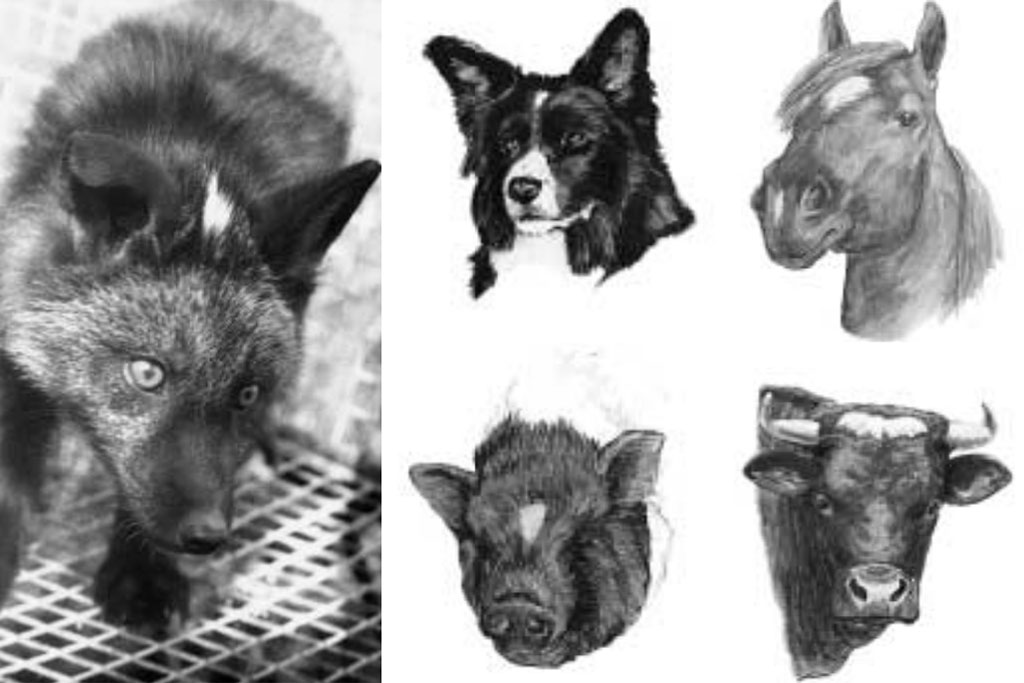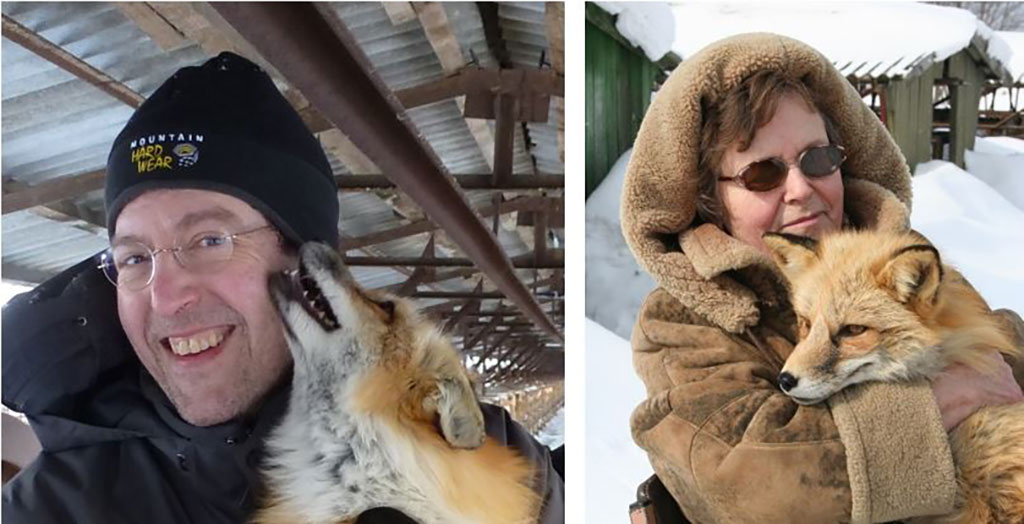
The remarkable tale of one man's experiment in domestication is told in How to Tame a Fox (And Build a Dog) [University of Chicago Press, 2017], by Lee Alan Dugatkin and Lyudmila Trut. Photo: Institute of Cytology and Genetics archives.
In the Fall of 1952, a Russian scientist boarded an overnight train from Moscow to Tallinn, the capital of Soviet Estonia. It was the beginning of a remarkable adventure that would change our understanding of animal domestication.
Dmitri Belyaev, a geneticist by training, was a lead scientist at the Central Research Laboratory on Fur Breeding Animals in Moscow, working to help the many government-run fox and mink farms produce more beautiful and valuable furs. Fur farming was an important source of foreign currency for the Soviet government after the war, which provided Belyaev with some protection for the daring experiment he was about to launch.
It was protection he needed, because while Russian geneticists had once been world-leaders, this important new field of study was under attack in Stalin’s Russia. Soviet science policy was dominated by Trofim Lysenko, a poorly educated peasant’s son who rose to power in the 1930s as part of Stalin’s glorification of the common man. Lysenko’s bizarre theories were eventually discredited, but meanwhile a generation of geneticists lost their jobs because their work would have exposed Lysenko as a fraud. Some – including Belyaev’s own brother — were imprisoned and killed.

Belyaev enjoyed a measure of freedom because of his success in developing valuable new genetic lines of mink. But the daring new project he was about to launch went far beyond his mandate to increase the value of fur production.
Belyaev was fascinated by the question of how animals had first come to be domesticated. The way farmers selectively breed domesticated plants and animals for desirable traits was quite well understood. But this didn’t explain how certain species had been domesticated in the first place. Or why so few species of plants and animals out of the millions on the planet had ever been domesticated – only a few dozen animals, mostly mammals, plus a few fish, birds, and insects such as silk worms and honey bees.
Scientists by now believed that dogs were the first species domesticated by humans, some 15,000 years ago, and that they had evolved from wolves. But no one really understood how wolves – animals that generally fear and avoid or act aggressively towards humans – developed into man’s best friend, an animal that is attracted to and trusts humans.
Belyaev was also intrigued by the fact that so many of the changes that occur in many different domesticated species were so similar. As Charles Darwin had noted, they often had patches of different colours on their coats. And they often retained physical traits from childhood that their wild cousins outgrew as they matured: floppy ears, curly tails, shorter snouts and babyish faces – neotonic features that make young animals so “cute”. But why would breeders have selected for these traits? Farmers received no benefit, after all, from cows with spotted hides or pigs with curly tails. So why had they emerged?
Belyaev had a theory that domestication – with all the qualities that distinguish domesticated animals from their wild cousins — might be triggered by selecting for just a single trait: tameness. It had been suggested that dogs evolved from less aggressive wolves – individuals that would have been low-ranking in their own packs but were tolerated close to human settlements, where they gained access to a more reliable source of food and thrived. Belyaev wondered if this process might be replicated by repeatedly selecting the least aggressive foxes on fur farms for breeding.
Floppy Ears and Curly Tails

One of the well-known features of domesticated animals – dogs, cats, cows, pigs — is that they can breed several times a year, not just once like most of their wild ancestors. If farmed foxes could be bred more than once a year there would be a clear economic benefit – and this was Belyaev’s cover story as he approached a trusted colleague in Estonia that fateful day in 1952. Nina Sorokina was in charge of some 1,500 silver foxes on a large government-owned farm in a remote forest hamlet. She was surprised by Belyaev’s proposal, because silver foxes were generally quite fearful and aggressive towards people, but she agreed to begin selecting and breeding a group of the least aggressive animals.
The foxes Sorokina bred in Estonia provided the nucleus for a much larger project that Belyaev launched at a new research centre in Siberia as Lysenko was finally repudiated after Stalin’s death. The results soon followed, validating Belyaev’s ground-breaking theories of domestication. Within ten generations – barely a blink in evolutionary time — foxes were being born that were noticeably tamer. These puppy-like foxes had floppy ears, piebald spots, and curly tails. Some of these pups eagerly approached humans with their tails wagging, behavior never seen before in foxes. As scientific knowledge of hormones evolved, it was confirmed that these newly domesticated foxes had far lower levels of stress hormones. In the next stage of the research, several of the tamest foxes actually lived in a house with one of the lead scientists, Lyudmila Trut, and soon acted very much like dogs.
The speed with which these changes in the physiology and behavior emerged confirmed Belyaev’s radically new understanding of the process of domestication. Since Darwin, scientists had assumed that change could occur only in small increments over long periods of time, driven by a gradual accumulation of useful but random genetic mutations. The speed with which these new domesticated foxes evolved, however, suggested to Belyaev that the changes revealed a range of genetic variation that already existed within the original fox population.

This would explain why such a small number of plant or animal species has ever been domesticated. Wild horses, for example, must have had a wide range of genetic variation within their populations, facilitating domestication, while zebras – which have sometimes been somewhat tamed, but never domesticated – do not.
Belyaev was ahead of his time in proposing that important changes to physiology and behaviour might result without the mutation of genes, but rather through the activation or deactivation of existing genes in response to new environmental pressures — in this case, the selection for tamer foxes. The disruption of long-established systems of genetic stability could provoke a complex suite of changes (curly tails, spotted coats, shorter snouts, etc.) in surprisingly few generations.
Belyaev’s ground-breaking ideas were, in fact, originally sparked by his observation of farmed mink, where he saw new colour strains – pastels, sapphires, violets, pearls – emerge less than 30 years after wild mink were brought onto farms.
Not least interesting, Belyaev’s work puts the lie to activist claims that farmed mink and foxes are “wild animals” that should not be kept in captivity. These species have been selectively bred on farms for more than 100 generations, resulting in significantly different colours, size, and behaviour. These are no longer “wild” animals.

The full story of this extraordinary research project has now been told for the first time in a wonderful book, How to Tame a Fox (And Build a Dog), co-authored by Lyudmila Trut and Lee Alan Dugatkin. Trut heads the research group at the Institute of Cytology and Genetics in Novosibirsk, and continues to lead Belyaev’s fox project to this day. Dugatkin is a professor of biology at the University of Louisville and a science writer. Fur farmers and anyone interested in animals and domestication will find it a fascinating read!
FURTHER READING: How humans domesticated themselves. National Public Radio, October 31, 2020.
***
To learn more about donating to Truth About Fur, click here.










